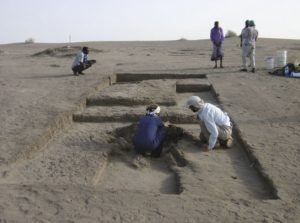
Neolithic site of KUR-07 during 2017 excavations of the site. ©VAPOR-Afar
Initié en 2014, le projet « Volcanological and Archaeological Program for Obsidian Research – Afar (VAPOR-Afar) » mène des prospections et opérations de fouilles dans la basse vallée de l’Awash de l’Afar Central en Ethiopie. Ce programme multidisciplinaire croise différentes approches et méthodes (archéologie, géologie, gîtologie, vulcanologie, géomorphologie, paléoclimatologie, archéozoologie, technologie des productions, archéobotanique, géochimie, cartographie, etc.) pour reconstituer les dynamiques des relations homme-milieu de la fin du Pléistocène à l’Holocène moyen dans cette région aride de la Corne de l’Afrique.
Le projet VAPOR-Afar étudie la trajectoire des populations préhistoriques installées le long des rives du lac Abhé (Ethiopie) au cours des 20 dernières années et leur intégration de l’élevage dans des stratégies de subsistance qui étaient jusqu’alors dominées exclusivement par des économies de chasse et de pêche. Complété par des études géologiques et géomorphologiques et des carottages du lac, ce projet archéologique vise à mieux comprendre la mobilité (provenance des sources d’obsidienne et d’argile), l’évolution de l’hydroclimat régional, de l’environnement et des paysages associés, et à développer une séquence chrono-culturelle solide pour la région éthiopienne de l’Afar.
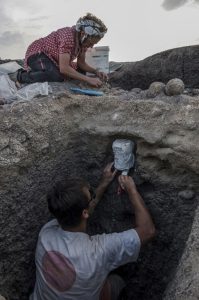
Initiated in 2014, the « Volcanological and Archaeological Program for Obsidian Research – Afar (VAPOR-Afar) » project conducts surveys and excavation operations in the Lower Awash Valley, Central Afar in Ethiopia. This multidisciplinary program combines different approaches and methods (archaeology, geology, geology, volcanology, geomorphology, paleoclimatology, archaeozoology, production technology, archaeobotany, geochemistry, cartography, etc.) to reconstruct the dynamics of human-environment relations from the end of the Pleistocene to the middle Holocene in this arid region of the Horn of Africa.
The VAPOR-Afar project investigates the trajectory of prehistoric populations settled along the shorelines of Lake Abhe (Ethiopia) over the last 20000 years and their integration of herding into subsistence strategies that had until then been dominated exclusively by hunting and fishing economies. Complemented by geological and geomorphological surveys and lake coring, this archaeological project seeks to better understand mobility (obsidian and clay source provenance), the evolution of the regional hydroclimate, environment and associated landscapes, and develop a solid chrono-cultural sequence for the Ethiopian Afar region.
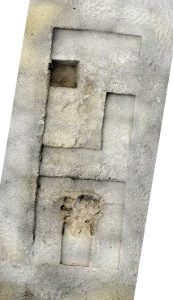
Photo of KUR-07 2017 excavation; C. Mologni and L. Khalidi excavating Raso-02 S1. ©VAPOR-Afar.
Membres permanents / Permanent members :
Alarashi (CSIC-IMF, Barcelone), F. Angesom (TRACES, Toulouse), F. Arnaud (Edytem, Chambéry), A. Balemwal (SES, U. Addis Ababa), D. Barboni (CEREGE, Aix-en-Provence), B. Bourel (IMBE, Aix-en-Provence), L. Bruxelles (INRAP-TRACES, Toulouse), A. Carré (CEPAM-CNRS, Nice), J. Cauliez (TRACES-CNRS, Toulouse), E. Chaumillon (LIENSs), T. Coulombier (LIENSs), L. Chesnaux (Paléotime), L. Coudert (TRACES, Toulouse), G. Davtian (CEPAM-CNRS, Nice), C. Doubre (ITES, Strasbourg), M. Gabriele (Trajectoires, Paris), J.-F. Girard (ITES, Strasbourg), B. Gratuze (IRAMAT-CEB, Orléans), E. Hainsworth (CFEE), G. Hervé (LSCE, Paris-Saclay), L. Khalidi (CEPAM, Nice), J. Lesur (MNHN, Paris), E. Malet (Edytem, Chambéry), C. Ménard (CERP, Tautavel), V. Michel (CEPAM, Nice), C. Mologni (CEPAM / TRACES, Nice), S. Nomade (LSCE, Paris-Saclay), C. Oppenheimer (U. Cambridge), F. Orange (CCMA-UCA, Nice), B. Engda Redae (ARCCH, Palevoprim, Poitiers), H. Berhane Taezaz (ARCCH, U. of Witswatersrand, Johannesburg), C. Tribolo (Archéosciences, Bordeaux), M. Revel (Geoazur, UCA, Sophia Antipolis), D. Rosso (U. Valencia), A. Salavert (MNHN, Paris), M. Schuster (ITES, Strasbourg), C. Vidal (U. Cambridge)
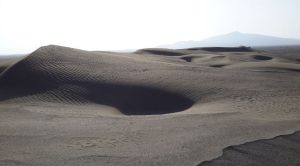
Participants
S. Asrat (ARCCH, Addis Ababa), F. Capellari (CERP, Tautavel), E. Gauvrit-Roux (CEPAM, Nice), M. Gete Wondim (ARCCH, Addis Ababa), A. Mohamed (ABTC, Semera), L. Purdue (CEPAM, Nice), T. Senay (ARCCH, Addis Ababa), N. Wondie (ARCCH, Addis Ababa)
Programmes de recherche et collaborations
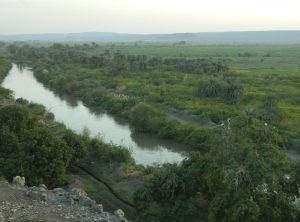
- 2021-2025 : ANR Nilafar – The NILe and AFAR regions: hydrologic changes and impact on human adaptation in the last 20,000 years (ANR-20-CE03-0011-01). PI: M. Revel (Géoazur). Director of Archaeology Work Package: L. Khalidi (CEPAM).
- 2018-2020 : CLIMAFAR – L’adaptation humaine face aux changements CLIMatiques dans les régions du Nil et de l’AFAR de 25,000 ans à aujourd’hui, (Agence Nationale de la Recherche « Investissements d’Avenir UCAJEDI n° ANR-15-IDEX-01 ») porté par L. Khalidi (CEPAM-CNRS) et co-porté par M. Revel (Géoazur-UCA).
- 2017-2020 : TelluS-Rift AGXIM : Aléas géologiques, histoire du peuplement et transformations socio-économiques d’une zone lacustre au cœur de la dépression Afar (Ethiopie). PI: C. Doubre (ITES, UMR7063).
- Depuis 2015 : ANR Big Dry: Ruptures et continuité dans le peuplement de l’Afrique à la fin du Pléistocène : paléoanthropologie, paléoenvironnement et archéologies comparées du Rift et du Nil dans leur cadre continental (ANR-14-CE31-0023). PI : F. Bon (TRACES, UMR5608).
Programmes de terrains partenaires
- TelluS-Rift AGXIM : Aléas géologiques, histoire du peuplement et transformations socio-économiques d’une zone lacustre au cœur de la dépression Afar (Ethiopie). PI : C. Doubre (ITES, UMR7063).
- Premières Sociétés de Production dans la Corne de l’Afrique (PSPCA), Djibouti. Dir. : Cauliez (TRACES).
- Late Stone Age Sequence in Ethiopia. : C. Ménard (CERP, Tautavel 2018 – en cours), F. Bon (Université de Toulouse Jean Jaurès, TRACES) et A. Dessie (ARCCH).
Publications récentes
Articles
-
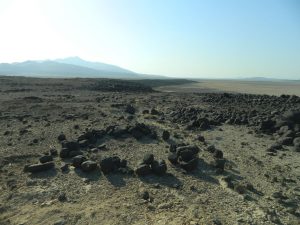
Affleurements de basalte de Kulsi Koma dans la plaine de Kurub Bahari ©VAPOR-Afar
Kulsi Koma basalt outcrops in Kurub Bahari plain ; VAPOR-AfarMologni, C., Bruxelles, L., Schuster, M., Davtian, G., Ménard, C., Orange, F., Doubre, C., Cauliez, J., Revel, M., Khalidi, L. (2021). Holocene East African monsoonal variations recorded in wave-dominated clastic paleo-shorelines of Lake Abhe, Central Afar region (Ethiopia & Djibouti). Geomorphology 391: 107896. https://doi.org/10.1016/j.geomorph.2021.107896
- Khalidi, L., Mologni, C., Ménard, C., Coudert, L., Gabriele, M., Davtian, G., Cauliez, J., Lesur, J., Bruxelles, L., Chesnaux, L., Engda Redae, B., Hainsworth, E., Doubre, C., Revel, M., Schuster, M., Zazzo, A. (2020). 9000 years of human lakeside adaptation in the Ethiopian Afar: fisher-foragers and the first pastoralists in the Lake Abhe basin during the African Humid Period. Quaternary Science Reviews 243 (2020): 106459. https://doi.org/10.1016/j.quascirev.2020.106459
- Mologni, C., Revel, M., Blanchet, C., Bosch, D., Develle, A.-L., Orange, F., Bastian, L., Khalidi, L., Ducassou, E., Migeon, S. (2020). Frequency of exceptional Nile flood events as an indicator of Holocene hydro-climatic changes in the Ethiopian Highlands. Quaternary Science Reviews 247 (2020): 106543. https://doi.org/10.1016/j.quascirev.2020.106543.
- Khalidi, L. (2016). Volcanological and Archaeological Program for Obsidian Research (VAPOR)-Afar. In A Catalogue on Ethiopian Archaeological and Paleontological Sites Volume I – Afar. T. Solomon, D. Zerihun, B. Engda, F. Zelelew, S. Asrat, B. Egziabher, M. Michael (eds.). Addis Ababa: ARCCH, ELMES P.P 0911 236932, pp. 106-114.
Chapitres
- Khalidi, L., Cauliez, J., Bon, F., Bruxelles, L., Gratuze, B., Lesur, J., Ménard, C., Gutherz, X., Crassard, R., Keall, E. (2018). Late prehistoric oasitic niches along the southern Red Sea (Yemen and Horn of Africa). In From refugia to oases: living in arid environments from prehistoric times to the present day. XXXVIIIe rencontres internationales d’archéologie et d’histoire d’Antibes. L. Purdue, J. Charbonnier, L. Khalidi (eds.). Antibes: Éditions APDCA. pp. 71-99.
- Bastian, L., Revel, M., Vigier, N., Bayon, G., Mologni, C., Khalidi, L. (2018). Variations hydro-climatiques en Afrique du Nord-Est depuis 32 000 ans : impact sur l’environnement et l’homme. In From refugia to oases: living in arid environments from prehistoric times to the present day. XXXVIIIe rencontres internationales d’archéologie et d’histoire d’Antibes. L. Purdue, J. Charbonnier, L. Khalidi (eds.). Antibes: Éditions APDCA. pp. 35-52.
Blogs Scientifiques
- Gabriele, M. (2021). Réseaux sociaux dans la Corne de l’Afrique au temps des premiers pasteurs-potiers : une étude de l’origine des pâtes des céramiques imprimées de l’Afar. Un Œil sur la Corne/An Eye on the Horn, Scientific blog of the French Centre for Ethiopian Studies (CFEE, Addis Ababa), 22-1-2021. https://cfee.hypotheses.org/7638.
- Coudert, L. (2020). Stratégies économiques dans la vallée du Rift éthiopien pendant la Préhistoire récente. Un Œil sur la Corne/An Eye on the Horn, Scientific blog of the French Centre for Ethiopian Studies (CFEE, Addis Ababa), 30-03-2020. https://cfee.hypotheses.org/7122
- Khalidi, L. (2020). The evolution of Lake Abhe’s paleoshorelines reveals 9000 years of human resilience in the face of climate change, Un Œil sur la Corne/An Eye on the Horn, Scientific blog of the French Centre for Ethiopian Studies (CFEE, Addis Ababa), 21 août 2020. https://cfee.hypotheses.org/7448
- Doubre, C., Ficquet, E., Khalidi, L. (2018). Busy and interdisciplinary in the Afar: the AGXIM Project, Un Œil sur la Corne/An Eye on the Horn, Scientific blog of the French Centre for Ethiopian Studies (CFEE, Addis Ababa), 14 June 2018. https://cfee.hypotheses.org/2759
- Mologni, C. (2018). Lacustrine paleoenvironments and prehistoric occupations in the Lower Awash and Gobaad Valleys: first steps to understanding Human-Climate coevolution in the Lake Abhe paleobasin, Central Afar, Un Œil sur la Corne/An Eye on the Horn, Scientific blog of the French Centre for Ethiopian Studies (CFEE, Addis Ababa), 26 March 2018. https://cfee.hypotheses.org/2516
Communiqués de presse
- L’évolution des paléorivages du lac Abhé dans l’Afar éthiopien révèle 9 000 ans de résilience humaine face aux changements climatiques, Actualités de l’INEE. Publié en ligne le 9 septembre 2020. https://www.inee.cnrs.fr/fr/cnrsinfo/levolution-des-paleorivages-du-lac-abhe-dans-lafar-ethiopien-revele-9-000-ans-de
- L’évolution des paléorivages du lac Abhé en Afar éthiopien révèle 9000 ans de résilience humaine face aux changements climatiques. Actualités de la Fondation Fyssen, Publié en ligne 27 août 2020. http://www.fondationfyssen.fr/fr/divers/levolution-paleorivages-lac-abhe-afar-ethiopien-revele-9000-ans-de-resilience-humaine-face-aux-changements-climatiques/
- Article | L’évolution des paléorivages du lac Abhé en Afar éthiopien révèle 9000 ans de résilience humaine face aux changements climatiques. Actualités du CEPAM, published online 19 August 2020. https://www.cepam.cnrs.fr/actualite/article-levolution-des-paleorivages-du-lac-abhe-en-afar-ethiopien-revele-9000-ans-de-resilience-humaine-face-aux-changements-climatiques/
- Référence à la publication 9000 years of human lakeside adaptation in the Ethiopian Afar: Fisher-foragers and the first pastoralists in the Lake Abhe basin during the African Humid Period dans la Lettre du Société Géologique de France Pangea Infos 24 (August 2020).

Porteur / PI :
L. Khalidi (CEPAM-CNRS) Contact : lamya.khalidi@cepam.cnrs.fr tel : +33 (0)489 152411
Durée (année de début) : 2014 –
Sites internets :
CLIMAFAR
ANR NILAFAR
Équipe :
STEP Systèmes Techniques Ethnoarchéologie Préhistoire
Partenaires/ Partners :
CNRS, CEPAM, Geoazur, UCA, UNSA, Centre Français des Études Ethiopiennes (CFEE), Ethiopian Authority for Research and Conservation of Cultural Heritage (ARCCH), Afar Bureau of Tourism and Culture, University of Addis Ababa, University of Semera
Types de financement/ Funding :
ANR « Nilafar », CNRS-CEPAM, IdexJEDI « Coretex », IdexJEDI « Climafar », TelluS-Rift « AGXIM » (INSU), Centre Français des Études Ethiopiennes (CFEE), ANR « Big Dry », Fondation Fyssen, American Institute for Yemeni Studies (AIYS).
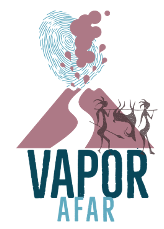
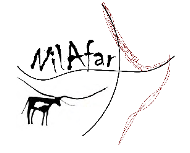

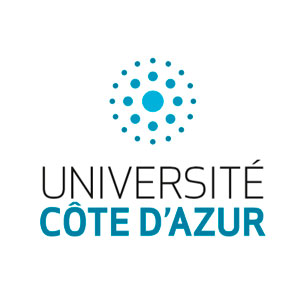
![]()
![]()
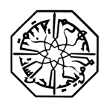

Thématiques de recherche / Research themes
L’adaptation et mobilité humaine du Later Stone Age à l’émergence du pastoralisme à travers l’étude de la circulation et techno-économie de l’obsidienne et les changements hydro-climatiques et paléoenvironnementales dans l’Afar éthiopien
Human adaptation and mobility from the Later Stone Age to the emergence of pastoralism through a study of the circulation and techno-economy of obsidian, and hydroclimatic and paleoenvironmental changes in the Ethiopian Afar.
Périodes / Periods of interest
LSA au Néolithique (20000-3000 BP)
LSA to Neolithic (20000-3000 BP)
Région / Region
Afar Central, Ethiopie (Basse vallée de l’Awash, paléobassin du lac Abhé)
Central Afar, Ethiopia (Lower Awash valley, Lake Abhe paleobasin)
Méthodes / Methods
technologie lithique, gitologie de l’obsidienne, archéologie, interactions hommes-milieux, technologie céramique, pétrographie, géochimie, géoarchéologie, géomorphologie, micromorphologie, géomatique (cartographie, SIG, photogrammétrie, photographie aérienne), archéozoologie, tracéologie, archéobotanique, paléoclimatologie, vulcanologie, géologie, géophysique, archéozoologie
Lithic technology, obsidian sourcing, archaeology, human-environment interactions, ceramic technology, petrography, geochemistry, geoarchaeology, geomorphology, micromorphology, cartography, topography, GIS, remote sensing, photogrammetry, aerial photography (kite), zooarchaeology, use-wear analysis, archaeobotonay, paleoclimatology, volcanology, geology, geophysical survey, zooarchaeology

